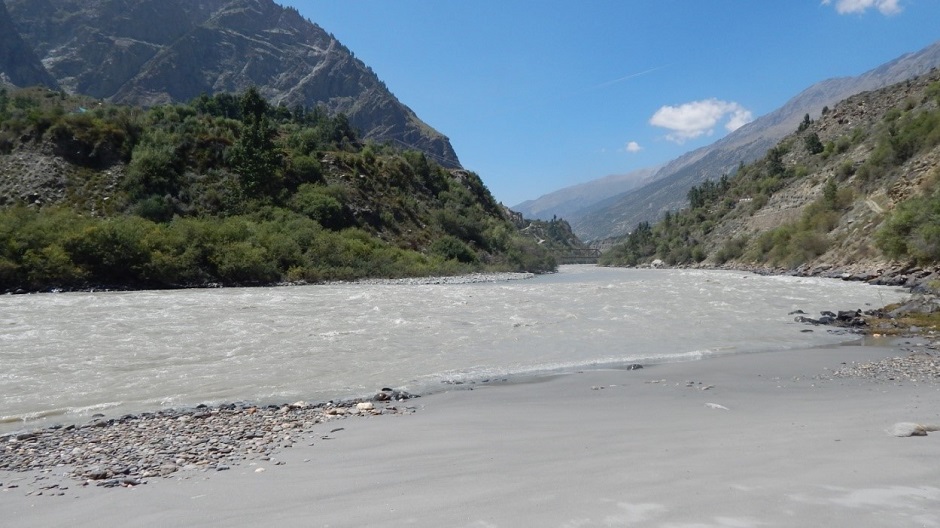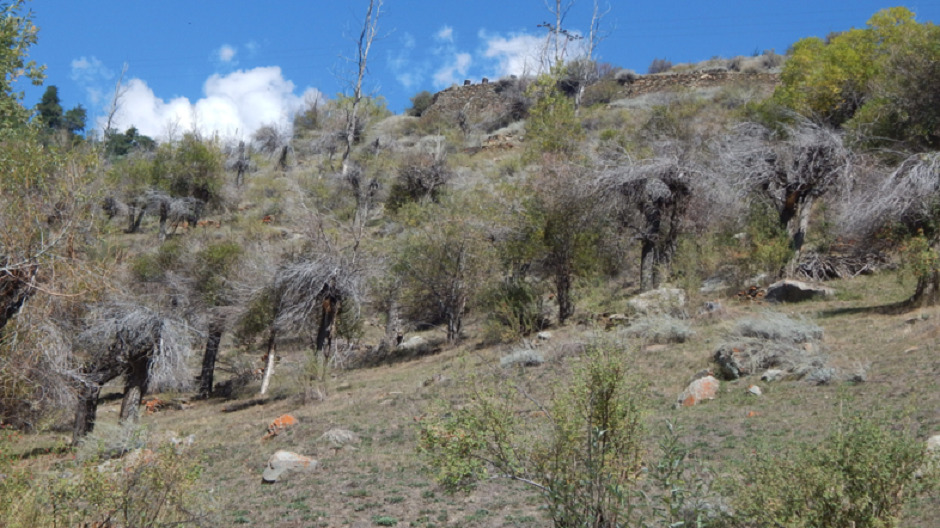The picturesque, Lahaul valley is a part of cold-deserts of Himachal Pradesh. The valley spans over an area of 6244 sq. km and lies between 320 8’ N – 320 59’ N latitude 76043’ E – 770 47’E longitude. The elevation varies from 2400 m – 6400 m amsl. Geographically, it is situated towards south of towering Ladakh and Zanskar Ranges. The famous Rohtang pass (3978 m) separates this valley from Kullu & Manali. Across Kunzum (4500m) pass, the valley meets with spiti and western Tibet. Towards the western extremities, the parts of Chamba district touch this valley. River Chenab and its main tributaries traverse the larger extent of Lahaul Valley. Human habitations are settled alongside Chenab and its major tributaries forming different sub-valleys viz., Chandra, Bhaga, Miyar and Pattan. Falling under the rain shadow effect, climatically lahaul valley exhibits arid conditions, have variation in temperatures, less rain and heavy snowfall. Lahaul valley is well known for scenic spots, glaciers, snow- covered peaks, water bodies, etc. The valley is more green than its counterpart Spiti, and certainly willow (Salix spp) contribute a lot to its greenary.
 Chenab River (Lahaul Valley)
Chenab River (Lahaul Valley)


The genus Salix belongs to botanical family Salicaceae and it is represented by more than hundred species worldwide. In India, various species of willow (Salix spp) are found which are mainly distributed in union territory of Jammu & Kashmir, Ladakh UT, Himachal Pradesh, and upto Arunachal Pradesh. Willows (Salix– spp) are the integral and important element of vegetation in the fragile arid landscapes of greater and trans- Himalayas. The genus exists both in tree and shrub form. More or less it acts as the life line of region. Natural patches as well as planted groves of willow are common sight in this valley. Willow is also the main agro-forestry species there and trees can be seen planted almost along every field as boundary plantation. In local dialects, willows are called as Julchang and Chhulchang.

Generally, willow prefers the moist habitats and propagated by vegetative means through shoot cuttings. Willow also has good coppicing ability and pollarding of the stem is done to get new shoots after every 2-3 years. The species is evenly used in agro-forestry farming practices and plantation programmes. In fact, willow is immensely useful species and put to myriad uses in cold arid regions of Himalayas. It impacts the ecological environment and holds relevance to the socio-economic status of the inhabitants of the lahaul valley. Willows are utilised in a number of ways by the local communities such as fuel wood, fodder, fencing, thatching, making handles of agriculture implements & other tools, etc. It checks soil erosion and used as windbreaks. In addition to this, medicinal uses of some species of willow has also been reported.
Though willows have thrived well in the climatic conditions of Lahaul valley. But, since a period of time there has been a worrisome scenario due to large scale drying of willows. Scientific studies indicate that use of same and old planting stock, aphid attack coupled with adverse impacts of climate change e.g. less snowfall, receding of glaciers, rise in temperature, faulty selection of planting sites are responsible for mass drying and mortality of willows in Lahaul valley.


Experts suggest to use superior planting stock, disease resistant clonal varieties and select appropriate planting sites. Local people also says that Kashmiri willow is resistant and less prone to drying. Undoubtedly, willows are integral vegetation component of Lahaul valley and play utmost important role in the lifestyle of local people. Clearly, concerted efforts from all quarters are required to keep the grace of willows intact in Lahaul valley.

With over 15 years of experience in Forest Ecology, Soil Analysis, and Herbarium methods, Dushyant Kumar, from Himalayan Forest Research Institute (HFRI), Shimla, has published research and technical papers related to Plant diversity, Forest Soil Properties and Medicinal plants.
Preferring to stay close to nature life cycles, he is a staunch supporter of sustainable management of nature’s resources of forests, land and rivers.


